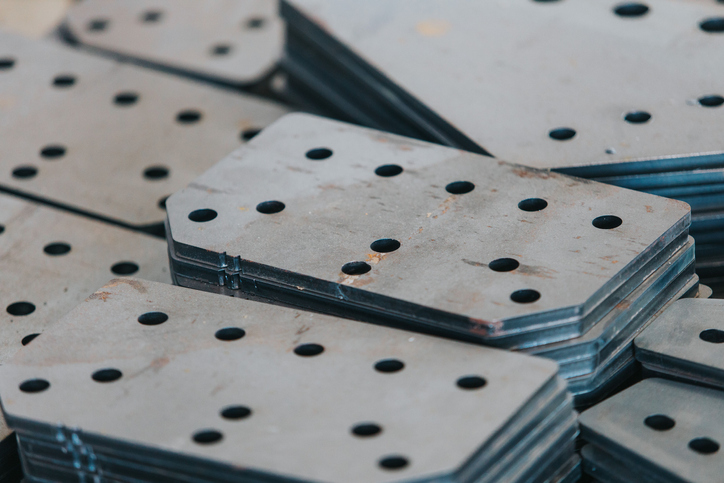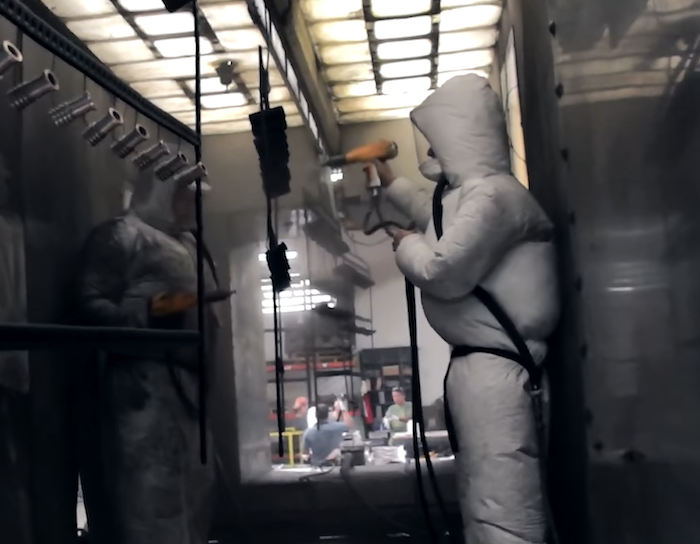Metal stamping and die casting are two common manufacturing processes, each with distinct advantages and applications. In this article, we examine the processes, benefits, limitations, and ideal use cases of metal stamping vs die casting.
Metal Stamping
Metal stamping is a process that involves using a die and a punch to shape and form metal sheets or plates into specific shapes and designs. Moreover, it is a fundamental process that serves in manufacturing an array of products, from automobile parts to household appliances. The process begins with placing a flat sheet of metal between a die and a punch. Then, the punch is then pressed down onto the metal sheet, or blank, using a press machine, causing the metal to deform and take on the desired shape. This technique allows for the creation of complex shapes, intricate details, and precision parts with high accuracy. Each step of this process requires careful planning and execution to ensure that the final product meets exact specifications.
Key Elements of Metal Stamping
Several elements come together to ensure a successful metal stamping procedure, with the following sections highlighting some.
Dies
The die plays a key role in molding metal blanks into a desirable shape. Generally, they are made from hardened steel or other durable materials to withstand high pressure and wear. They can achieve this by having unique designs that can cut, bend, or stretch metal into certain shapes.
Punch
The punch is the tool that presses down onto the metal blank, shaping it according to the die design.
Metal Sheet
The metal sheet or blank is the starting material, which can be made from various metals such as steel, aluminum, copper, or brass. The choice of metal plays a crucial role in the stamping process. Factors such as thickness, strength, and ductility influence how the metal responds to stamping operations.
Press
The press is the machine that applies pressure to the punch to shape the metal blank. Hydraulic or mechanical presses apply immense force to the metal sheet, driving it into the die to form the desired shape. However, to achieve consistent results, it is necessary to carefully control parameters such as press speed, pressure, and stroke length.

Types of Metal Stamping
There are various types of metal stamping, with each suiting specific applications and materials.
Progressive Metal Stamping
Progressive die stamping uses a series of stations to perform different operations on a strip of metal. As the strip progresses through the die, each station performs a specific task until the final part is completed. This method is ideal for the high-volume production of small to medium-sized parts, such as connectors, brackets, and electronic components.
Transfer Die Stamping
In transfer die stamping, a workpiece is transferred from one station to another using mechanical transport, with each station performing a different operation on the workpiece. This type of stamping is particularly useful for creating medium to large parts with complex geometries, such as automotive body panels and large structural components.
Compound Die Stamping
Compound die stamping performs multiple cutting and forming operations in a single press stroke. The compound die can cut and form a part in one step, thereby increasing efficiency. This method is especially suitable for high-precision components that require multiple operations, such as washers, gaskets, and simple geometrical parts.
Die Casting
Die casting is a manufacturing process that involves filling a mold, or die, with molten metal to create parts with high precision and accuracy. The process begins with the creation of the die, which has the geometry of the end product. Molten metal is then poured into the die, and the metal solidifies into the desired shape. The molten metal can be injected under high pressure in some cases.
Key Elements of Die Casting
Die: The die, which is the mold that shapes the molten metal into the desired form, is typically made from durable materials like steel or aluminum. Crucial to die casting is the design and fabrication of the die, consisting of two parts: the cover die and the ejector die.
Molten Metal: The molten metal serves as the raw material for forming the end product. Depending on the product requirements, several types of material can serve such as aluminum, zinc, copper, or magnesium.
Ejector Pins: Ejector pins push the solidified metal out of the die after it has cooled.

Types of Die Casting
Die casting could follow different methods depending on the attributes of the end product and raw material.
High-Pressure Die Casting
High-pressure die casting (HPDC) involves injecting molten metal into a die cavity under high pressure. This method is widely used for producing complex and high-volume parts. For example, automotive components and appliance housings are often made using HPDC. The process ensures excellent surface finish and dimensional accuracy.
Low-Pressure Die Casting
Low-pressure die casting uses a lower pressure to fill the die cavity. This technique is ideal for manufacturing parts that require superior mechanical properties, such as wheels and structural components. The slower filling rate reduces turbulence, leading to fewer defects and improved quality.
Gravity Die Casting
Gravity die casting relies on gravity to fill the die cavity with molten metal. This method is suitable for producing medium to large-sized parts with simple geometries, including pipes, valves, and engine blocks. The process is cost-effective and produces parts with good mechanical strength.
Vacuum Die Casting
Vacuum die casting involves creating a vacuum within the die cavity before injecting the molten metal. This technique is used to produce high-integrity parts with minimal porosity, such as aerospace components and high-performance automotive parts. The vacuum reduces air entrapment, resulting in higher-quality castings.
Squeeze Die Casting
Squeeze die casting combines the principles of die casting and forging. The molten metal is first injected into the die, and then additional pressure is applied to ensure complete filling and compaction. This method is used for producing parts with excellent mechanical properties and high-density, such as structural components and high-strength applications.
Differences Between Metal Stamping vs Die Casting
| Feature | Metal Stamping | Die Casting |
| Material Requirements | Ideal for producing versatile designs on sheet metals. | Suitable production method for high-strength alloys. |
| Production Volume and Rate | High production rate and volume. | Also has high production volume, but cooling times result in lower rates. |
| Setup Costs | Initial setup costs are lower. | Higher initial costs due to die design. |
| Part Complexity | For intricate geometries with thin walls. | Provides high precision and accuracy when creating complex parts. Also delivers excellent surface finish. |
| Parts Strength | May require additional processing, such as heat treatment to improve material strength. | Produces high-strength, high-integrity parts directly. |


